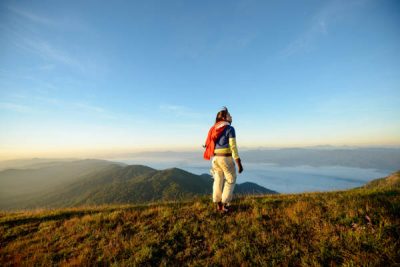
So you’re planning on going trekking, huh? Imagine humping 20kgs on your back over impossible terrain with a bunch of obnoxious Moldavians and a trekking guide who keeps getting lost.
The Tourism Authority of Thailand (TAT) publishes a list of licensed agencies and there is a Professional Guide Association which issues accreditation to guides. Wandering around the touristy areas of Chiang Mai, you’ll discover plenty of companies offering treks operating out of small shops.
Additionally, many guesthouses also offer treks, but usually act as agents for other companies. If not enough people are booked on your trek, they’ll shift you to a different trek at the last minute and you’ll end up with something completely different to what you were promised. mai pen rai (never mind), this is Thailand.
Asking other travellers is one sure method of verifying an agency’s service, and many established companies keep a folder of written testimonials. Either way, as long as they are a licensed agency, the excursion is likely to be a memorable and adventurous one, as you just can’t beat Northern Thailand for mountainous beauty.
Perhaps the single greatest factor determining whether you will enjoy your trek or not is the people you go trekking with. A noisy and unmindful group of nationals can easily spoil the experience and affect the reception you get from the hill tribe hosts. There’s not much you can do about this, other than to try and encourage people you’ve met to sign up with you. You can also ask to see who has signed up and where they are from, if this helps you judge possible character.
When trekking in Northern Thailand, you will need a good pair of walking or hiking boots. Don’t expect any luxury, as you will be staying in very rural villages where everyone sleeps on the floor and uses the most basic amenities. The best time to go trekking is between November and March, when the weather is dry and the vegetation is still lush. However, up in the mountains, it gets very cold at this time of year and some warm clothing is essential. Between June and September, wet weather gear is a must.
It’s also important to be sensitive to your hosts. Although the hill tribes prefer to live in isolation and shy away from any outside influence and interference, the harsh modern reality is that they are desperately poor and are now dependent on their role in this tourist activity. They are indifferent to foreigners traipsing through their village, but this is usually out of economic necessity.
Traditionally, these ethnic minorities have occupied the bottom rung of the Thai status ladder and Thai authorities are notorious for abusing their rights. Please remember to be sensitive to taking photos; villagers may expect a tip for this (20 baht is fair) or they may refuse outright, due to beliefs. Also, remember to respect their privacy.
Opium smoking has been popularly associated with trekking and indeed you are likely to visit areas that were once heavily under poppy cultivation, providing the locals with an income. However, over the past decade this has been largely eradicated and replaced by the highly successful King’s Project, which offers alternative agriculture – an interesting element in itself. While some guides can still arrange opium smoking, it is strongly discouraged due to the harmful legacy it leaves on the youth of the village. Besides, the present government has initiated a war on drugs, which has created widespread fear among the hill tribes and introduced strong penalties to offenders – foreigners included.
A trek will cost a minimum of 500 baht a day, with meals and basic hut accommodation included. If you pay anything less, your guide probably isn’t registered or not very responsible or organised. Full packages including additional activities might cost from around 2,000 Baht for three full days.
Ultimately, your choice may be governed by practicalities, such as departure dates, villages visited and whether the agency can guarantee numbers.

